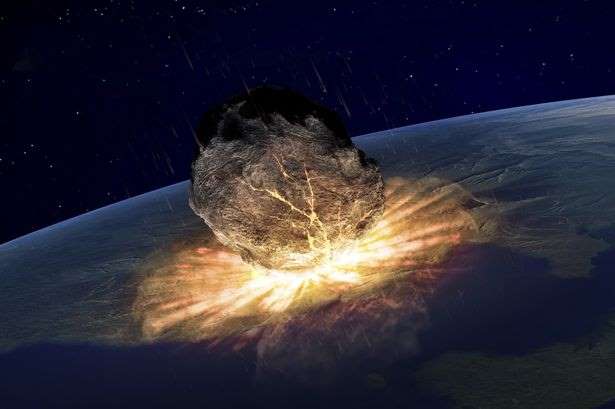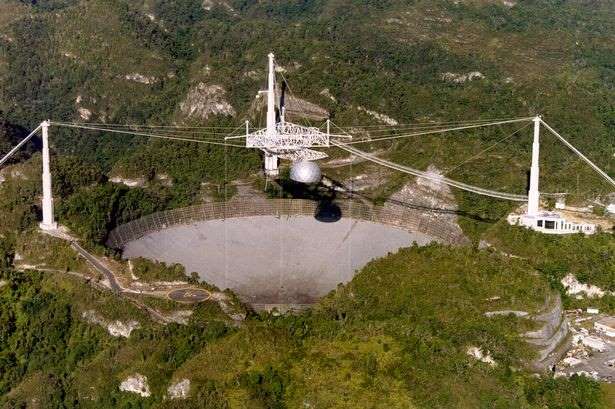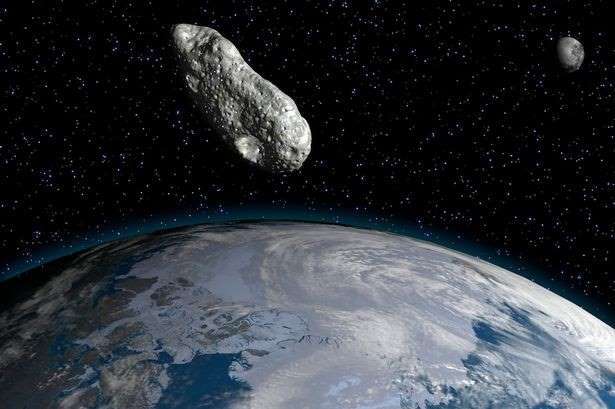February 13, 2017
Earth is potentially at risk from a peanut-shaped asteroid that's larger than New York's Empire State Building.

February 13, 2017
Earth is potentially at risk from a peanut-shaped asteroid that's larger than New York's Empire State Building.

The asteroid, labelled 2015 BN509 by NASA, flew past the Earth last week at close to 44,000mph. At its closest point, it was 14 times the distance between the Earth and the moon.
The asteroid measures roughly 200m (660ft) wide and 400m (1,310ft) long.
But the American space agency has labelled it "potentially hazardous" and warned that it could one day strike the Earth.
It was captured on film by the Arecibo Observatory, a giant radio telescope , during its flyby of the Earth. The skyscraper-sized chunk of rock can be clearly seen tumbling through the blackness of space.
Dr Edgard Rivera-Valentín, a planetary scientist with the Universities Space Research Association who studies data from The Arecibo Observatory in Puerto Rico, told Business Insider : 'The peanut shape comes from the fact that it is a contact binary where the two parts [of asteroids] could not successfully orbit each other and fell back together.
Arecibo Observatory, which was used as a setting for the James Bond film GoldenEye , is capable of studying size, shape, composition and geology of an asteroid – as well as how it is spinning.
"Arecibo goes beyond acting as a fortune teller, we can characterize these objects," said Dr Rivera-Valentín.

Arecibo Observatory, a facility of the NSF
"An asteroid impact, unlike other natural catastrophes, can actually be avoided."
NASA has an asteroid early warning system called Scout in place. Within 10 minutes of spotting an incoming asteroid it can project potential flight paths.
It alerts three other telescopes to perform follow-up observations and narrow down a rock's trajectory.
"When a telescope first finds a moving object, all you know is it's just a dot, moving on the sky. You have no information about how far away it is," astronomer Paul Chodas from NASA's Jet Propulsion Laboratory, which runs the Scout program, told NPR.

"The more telescopes you get pointed at an object, the more data you get, and the more sure you are how big it is and which way it's headed. But sometimes you don't have a lot of time to make those observations."
Scout is designed to keep track of so-called "Near Earth Objects", and identify those that could potentially be on a collision course with Earth, so NASA can respond.
Courtesy: Mirror
















































































































